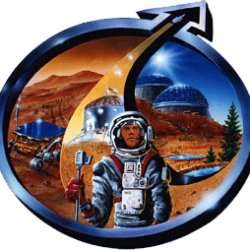Date: 3/22/2025
Name of person filing report: David Steinhour
Reason for Report: Routine
Non-Nominal Systems: Crew car. Power system battery, invertors, generator. Robotic observatory. HAB outer shell, tunnels.
Power system: "Solar: The battery bank does not hold charge when sun is down and low on the horizon. Inverter Slave 1 and 2 went offline and do not restart, which limits us to 5kW when on solar.
Main generator has been monitored for oil leaks; minor leaks observed, Moreover, generator is consuming oil because of worn piston rings. Adding oil every day is necessary. Generator is limited to 8kW, see previous reports for details.
Main generator:
1) Oil, oil filter, air filter changed on 3/19/2025.
2) Current hours – 8973.7"
Propane Readings: "Refilled 3/19/2025
Station Tank: 80%
Director Tank: 83%
Intern Tank: 86%
Generator Tank: 81%"
Water: "Hab Static Tank – 550 gallons
GreenHab – 200 gallons
Outpost tank – 550 gallons"
Rovers: "Sojourner rover used: Yes
Hours: 210.7
Beginning Charge: 100 %
Ending Charge: 100 %
Currently Charging: No
Notes on Rovers: None."
Cars: "Hab Car used and why, where: To Hanksville for supplies.
Crew Car used and why, where: No.
General notes and comments: Crew car driver’s side front ball joint is bad. Low oil pressure is most likely caused by a bad sensor (it does not change due to RPM or temperature like it should)."
Summary of Internet: Guest wifi had to be turned on manually 3/20, but automation worked fine last night 3/21
EVA suits and radios: "Suits: Nominal.
Comms: Nominal.
T-Echo EVA-link: Astro8 is malfunctioning and need to be replaced."
Campus wide inspection, if action taken, what and why: Tunnel tarp is once again ripped between science dome and solar observatory.
Summary of Hab Operations: Small cracks in the wall of the Hab in the loft area are allowing cold air intrusion.
Summary of GreenHab Operations: Nominal
Summary of SciDome Operations: Nominal
Summary of Observatories Operations: Robotic observatory offline.
Summary of RAM Operations: Nominal
Summary of Outpost Operations: Nominal
Summary of Health and Safety Issues: Nominal

